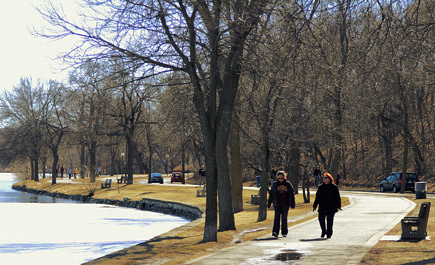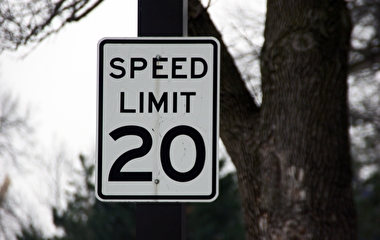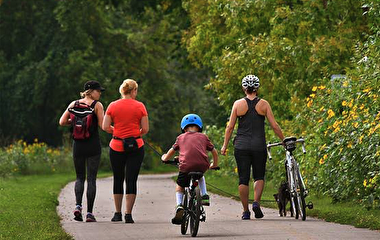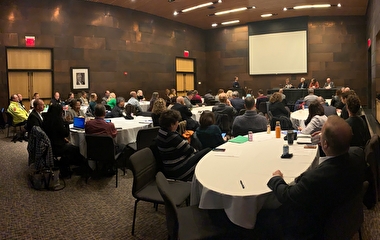Given the many benefits of parks, there’s growing interest in whether these green spaces are distributed equitably in urban areas. When researchers study park accessibility, they typically assume that people will use active modes of transportation (biking and walking) to reach their destinations. Few studies have considered automobile and transit accessibility.
A new analysis from the U of M helps fill this gap. It applies a comprehensive measure of park accessibility to determine the differences across space and population groups for Minneapolis and Saint Paul neighborhoods. Kristin Carlson and Jacqueline Nowak conducted the assessment last year as part of their graduate coursework for Professor Jason Cao of the Humphrey School of Public Affairs.
“The main goal of our work was to determine whether areas with higher median household income would have greater park accessibility by automobile, transit, and walking,” Carlson says.
The team obtained data from several sources, including the American Community Survey (2011–2015) for demographic, social, economic, and commuting data, and the U’s Accessibility Observatory for transportation data. The duo also spoke with local officials to understand how they evaluate their park systems and to gain more understanding of how people access and use parks.
The team then calculated how quickly different socioeconomic groups in Minneapolis and Saint Paul could reach park acreage in the seven-county metro area. The output from their approach was a summation of park acreage that can be reached by automobile, transit, and pedestrian modes after 10, 20, and 30 minutes of traveling.
Their analysis indicates that Twin Cities neighborhoods with greater racial diversity have better access by automobile than their counterparts. “The difference may be due to the transportation links serving these populations,” Carlson says. “These neighborhoods, which have lower incomes, are closer to freeways, and easy freeway access means faster paths to parks. This is advantageous for some types of park trips, but it may not be reasonable to expect residents to drive 20 minutes to a park, even if they have access to a vehicle.”
The team also looked at the additional number of parks residents could reach in 10 minutes when using transit compared with walking. “We found disparities,” Nowak says. “Transit improved park accessibility and reduced the equity gap over walking alone, but only to a limited extent. Pedestrian park access for lower socioeconomic groups is highest at the greatest time threshold (30 minutes). In other words, these groups tend to live further from parks.”
The Minneapolis Park and Recreation Board has invited the researchers to present their findings. “Better understanding of how people access regional parks, both in terms of transportation mode and their actual ability to do so, will provide critical data as we implement park improvements with a lens on racial and economic equity,” says Adam Arvidson, director of strategic planning with the board. “This is information we do not currently have and would not be able to produce on our own.”
Nowak is a graduate student pursuing dual master’s degrees in civil engineering and urban and regional planning. Carlson completed her master’s degree in civil engineering in September and now is a researcher with the Accessibility Observatory.



